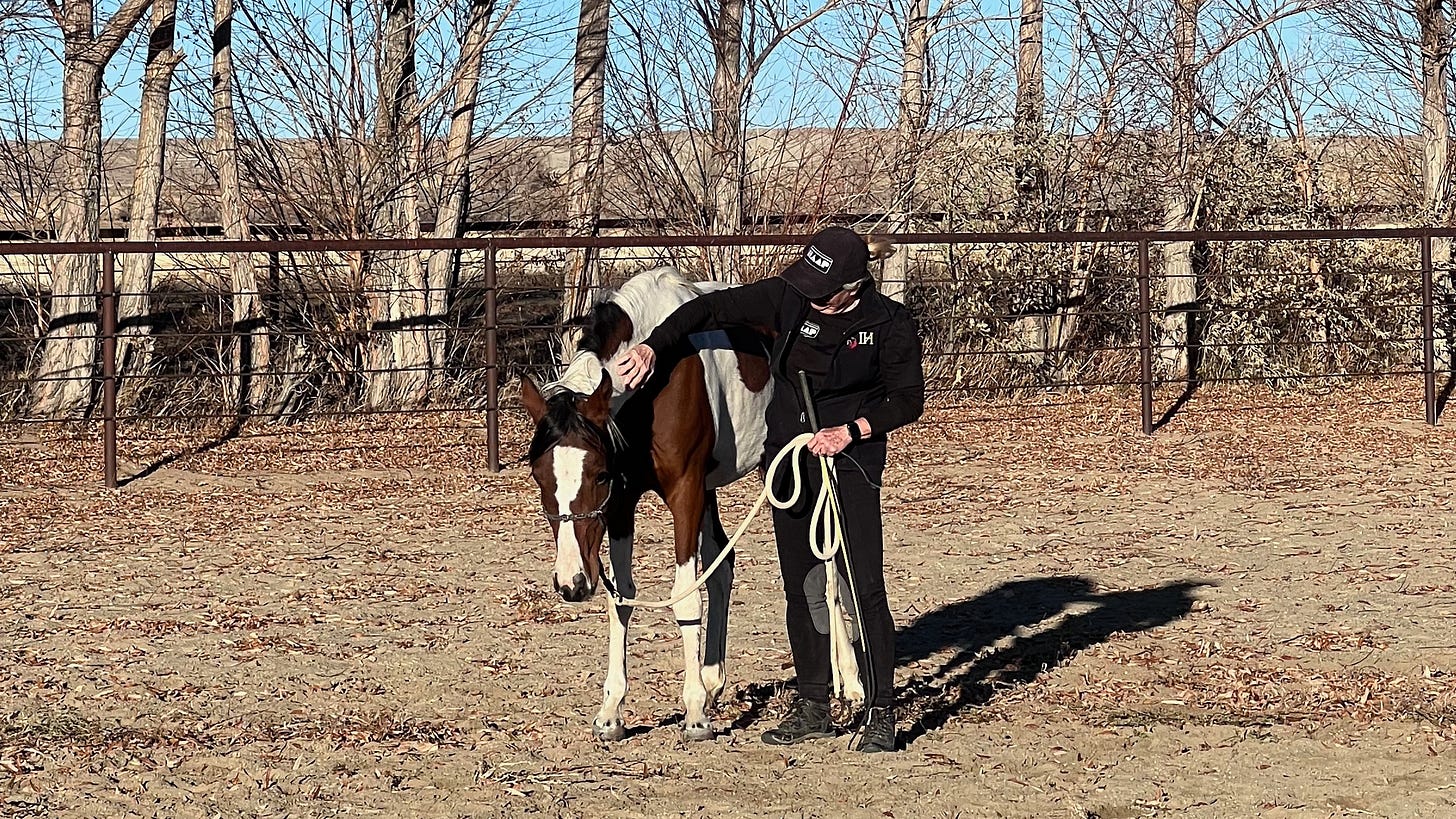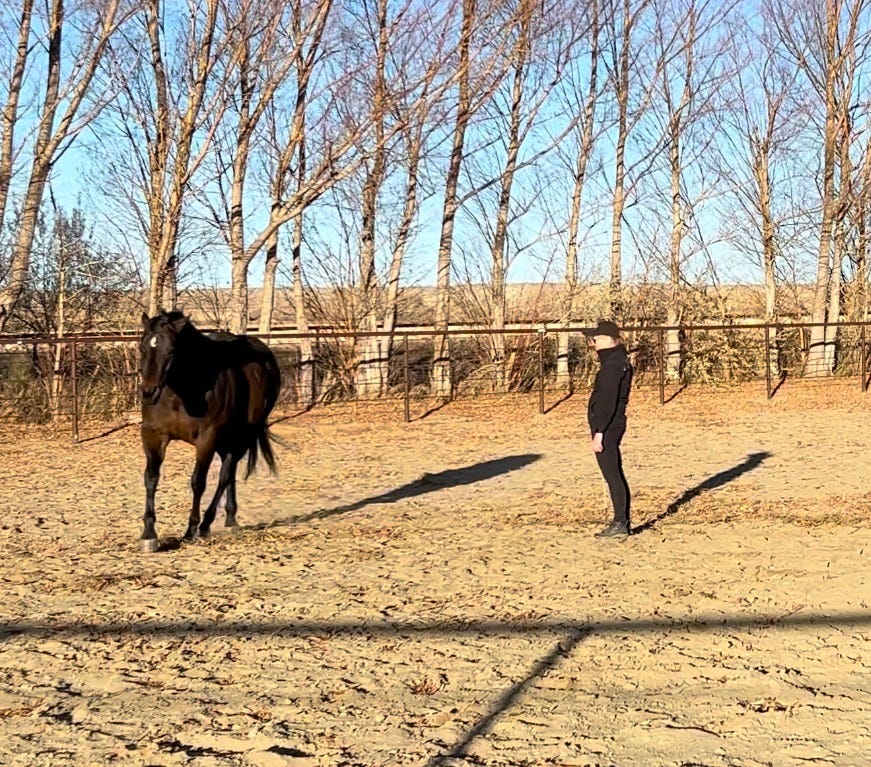
I’ve recently seen comments on social media that “lounging” or using circles to train horses will physically break them down, or that circling is just boring, so horses don’t want to do them. Generalized statements like that can encourage people to abandon a valuable horse training tool and create roadblocks to success.
Circling horses can be one of the best ways for humans to recognize and respond appropriately when horses are stressed emotionally, mentally, and physically.
It’s how circles are used that breaks horses down and creates boredom, not the circles themselves. The goal should be learning how to use circles, not abandon them.
When using circles for training, especially on the ground, horses can feel trapped and claustrophobic when too much pressure is applied to a horse to get them to do what we would like. This is true for a round pen especially, but also on a line outside a round pen, because the rope is just a portable round pen of varying widths.
Choosing the size of a circle is critical to success.
Small circles are much more difficult for horses than larger circles, physically.
Larger circles can be challenging for horses, mentally and emotionally. Ground training with large circles can cause a horse to feel disconnected from the human, and in the saddle, horses can lose focus as the circles get larger.
These two facts conflict. If the trainer focuses solely on the physical aspect of training, the horse’s emotional connection and mental stability can be compromised, and vice versa.

The need to balance the horse’s physical, emotional, and mental well-being presents horsemen with a great challenge. This extends to all aspects of training.
Focusing on the emotional stability of a horse is my priority as I feel this is where our relationship can be strained and relaxation is most likely to be lost. This is especially true for young horses.
With that in mind, the size of the circle that maintains the horse’s connection to me comes first. Once I’ve found a circle size that holds the connection to me most of the time, I can fold in the physical and or mental goal on which I want to work.
I can also use their need to get relief from physical discomfort to build on our relationship. Horses are wise enough to figure out that their human notices when their inside hind leg is getting tired while doing circles. Sometimes I think I hear horses tell me, “Gee, this human isn’t so hard to train, after all.”
Physical stress can derail a training session
One reason horses don’t learn quickly or easily, spook, or lose their focus on our goals is because of physical discomfort. Horses experience many kinds of physical distress. In this article, I’m referring to the fatigue horses feel when performing certain tasks. If they trust that you know when they become fatigued (especially in the hindquarters), and you respond appropriately, horses will get used to staying emotionally relaxed during training.

Common signs to recognize:
The horse becomes high-headed
The horse exhibits resistance to the task
The horse wants to change direction
The horse has increasing difficulty or resistance to stepping laterally with the inside hind leg
The reserved horse will break gait to the walk. If they break gait to a stop, they may in addition be troubled emotionally/mentally. The energetic horse will break gait to the canter or gallop. If it’s a gallop, they may in addition be troubled emotionally/mentally.

Recognizing these signs and learning how to deal with them builds a foundation of trust between horses and humans.
If you have questions for me about any of my posts, please feel free to contact me at isabellefarmer@gmail.com or click here: HAAP Farm Facebook page.
For more information about the amazing horses that have been and are being bred on the HAAP Farm, click here: HAAP farm web page.



Agree - it's not always the tool, but how it's used. And it's important to recognize - and respond to - indicators of stress.